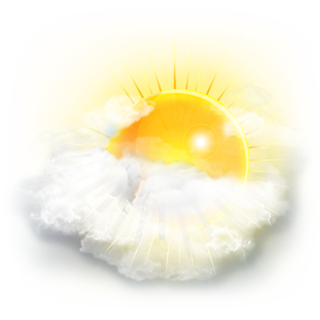“Cheap Thrills” by Sia
Certainly no stranger to the world of songwriting, 40-year-old singer, Sia Furler, has yet again made her mark in the world of pop music with her latest single “Cheap Thrills.” With its catchy hook “Baby I don’t need dollar bills to have fun tonight (I love cheap thrills!),” the song evokes a message that lies somewhere between Lorde’s “Royals” and Springsteen’s “Dancing in the Dark.” It suggests the age-old idea that happiness stems less from one’s physical possessions and more from the company one is with. Alongside the song’s words is a walking, electro-pop beat that differs between the album version and the collaboration with Grammy-winning artist, Sean Paul. The latter features a slight Jamaican vibe from the augmented bassline and Paul’s added vocals.
Though likely the main reason for the song’s popularity, the anthemic lyrics lack the emotional intensity and figurative lyricism found in the songwriter’s previous hits “Chandelier” and “Elastic Heart.” However, this method of repetition in songwriting is rampant throughout the umbrella genre of contemporary “dance” music; it seemingly aids to further impose the song’s meaning and allows more room for interpretation. With its danceable rhythm and near universal relevance, Sia’s latest tune has been a “Cheap Thrill” for just about anyone with access to a radio this summer.
“This Is What You Came For” by Calvin Harris feat. Rihanna
With the late 2000s resurgence of the house genre in pop music credited to Harris and a handful of other artists including Daft Punk and David Guetta, it comes as no surprise that he is still churning out danceable chart-topping singles today. His latest hit, “This Is What You Came For,” co-written with Nils Sjöberg (a pseudonym for past girlfriend Taylor Swift), features a light house rhythms and an addictive, electronic chorus repetition of Rihanna’s vocals. Many critics and fans alike complain of the over-processed sound quality of the song’s vocals, particularly the rise and chorus, which makes one wonder if such people have ever listened to EDM before. One of the song’s drawbacks is its lack of a driving bassline and percussive rhythms found in traditional house, which is featured in the majority of Harris’ other songs like “Sweet Nothing” and “We Found Love,” his other collaboration with Rihanna.
Without the raw EDM power of Harris’ other singles, the chilled-out tone of “This Is What You Came For” is better left at home or in the car than on the club dancefloor. Despite its memorable hook and complex synth instrumentation, it remains doubtful that this track will maintain its status after the summer heat dies down. It will most likely fade out to become just what it is, a hot summer song.
“Don’t Let Me Down” by The Chainsmokers feat. Daya
Alex Pall and Andrew Taggart, the duo behind 2014’s infamous “#SELFIE,” are back at it with their trap-influenced single “Don’t Let Me Down,” featuring 17-year-old Grace Tandon by the stage name Daya. Though it has less of a driving EDM rhythm in comparison to their previous hits, “Don’t Let Me Down” still features a heavy bassline and harsh synths in the chorus that won’t let you down while busting out your best moves on the dancefloor. As far as the vocals go, Daya lands somewhere in the range and timbre between Rihanna and Dolores O’Riordan of alt-rock band “The Cranberries.”
However, what it makes up for in headbanging grooves, “Don’t Let Me Down” lacks in originality. Though it doesn’t stand out much against EDM songs of either the past and present, it does bear a suspicious resemblance to David Guetta and Sia’s 2011 hit, “Titanium.” Both songs feature a comparably light electric guitar-esque riff at the beginning, similar airy vocals that lead up to the same rise-chorus-verse-rise pattern in the rest of the song. The similarity extends to the chord progressions and even the subject of both music videos, featuring a lead character with telekinetic abilities (which is actually a rather widespread theme throughout EDM). Regardless of its recycled sound, “Don’t Let Me Down” still brings something to the table that “Titanium” did not: its trap-influenced EDM sound, a subgenre that is still on the rise despite its near universal popularity.
“Can’t Stop the Feeling!” by Justin Timberlake
It doesn’t take much for and R&B-influenced track to reach top success across charts worldwide, as we saw with most recently Pharrell’s “Happy” in 2014, and Mark Ronson’s “Uptown Funk” in 2015. The current year brings us disco-pop, funk influenced “Can’t Stop the Feeling,” originally written by Timberlake for the upcoming Dreamworks movie “Trolls,” set to air this November. Shrouded in a late 2000s Jason Mraz vibe, the song leaves many listeners to reminisce about a time when R&B, instead of EDM, ruled the airways. Holding a steady beat with a computer-generated percussion track and backing computer synths, the song is seemingly perfect to jam anywhere—from a driver’s seat to the supermarket, or anywhere with a radio playing.
However, like many pop songs that reach this level of success, it is full of vague, feel-good lyrics that would not hold up its own if the background music was not so catchy. Despite this, it has gone on to reach an incredible amount of fame, becoming the first song to spend its first 10 weeks at the top of the Digital Download chart since the Black Eyed Peas’ 2009 smash hit, “Boom Boom Pow.” It is likely that in the end, the song’s popularity will be its own demise; it might become so overplayed like the aforementioned hits that it no longer resonates its feel-good summertime vibe with listeners in the same way it had at the peak of its success.


